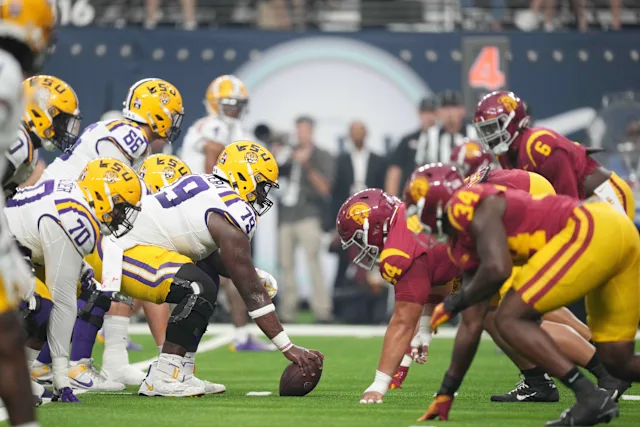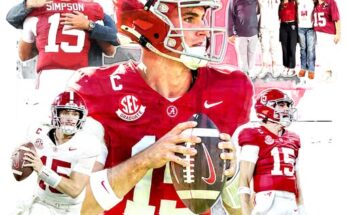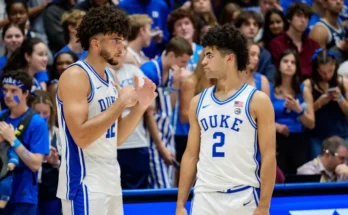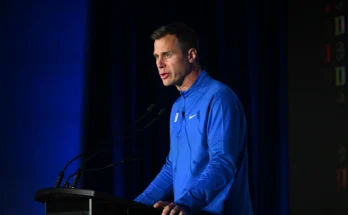The offensive line depth chart for LSU football is projected as spring practice draws to a close.
As LSU football wraps up another intense and developmental spring practice period under head coach Brian Kelly, one of the most important—and perhaps most quietly transformative—areas of focus has been the offensive line. While quarterback competitions, wide receiver rotations, and defensive schematic changes often grab headlines during the spring, it’s in the trenches where the foundation of a successful season is built. LSU knows that better than most programs, having ridden dominant offensive line play to national contention in past years. With a mix of returning starters, young talent, and hungry newcomers, the Tigers are working toward solidifying their offensive line depth chart, which could be a key component of a potential championship-caliber 2024 season.
At the heart of LSU’s offensive line identity is continuity. Returning stalwarts like Will Campbell and Emery Jones Jr. are providing leadership, experience, and elite talent. Both started as true freshmen and have since become foundational pieces up front. Campbell, the rock-solid left tackle, is projected as a potential first-round NFL Draft pick and has taken strides both physically and mentally this spring. His technique has improved, and his footwork continues to be among the best in the SEC. Jones, holding it down on the opposite edge at right tackle, is equally as valuable and has shown increased vocal leadership throughout spring drills.
That bookend pair gives LSU perhaps the best tackle combination in the conference, if not the country. Their presence on the edges gives the Tigers flexibility in how they protect the quarterback, call zone runs, and execute screens. But the interior of the line is where things get interesting, and that’s where the depth chart projections come into sharper focus.
At center, Charles Turner IV has been the go-to guy over the past couple of seasons. He’s experienced, knows the system well, and has a high football IQ, which is especially critical in making the line calls and handling pre-snap adjustments. While Turner hasn’t always been a dominating physical presence, his reliability and comfort level in the offense make him the likely starter once again. Still, the Tigers are not without options here, especially with Marlon Martinez and freshman D.J. Chester taking significant reps this spring. Martinez has stepped up his effort and versatility, often playing guard in live drills but also sliding over to center in rotation. Chester is young but promising, and LSU could have a tough decision if they value upside over experience, especially as the season progresses.
Left guard is likely to be manned by Miles Frazier, who returns after a strong 2023 campaign. Frazier has quietly been one of the more dependable members of the line, showing good hand placement, improved pad level, and the kind of consistency needed at a position that requires both brute strength and finesse. He’s also taken on more of a mentor role this offseason, especially with underclassmen watching his every move during position group drills. Behind Frazier is Bo Bordelon, who has been cross-training at both tackle and guard. Bordelon’s size and athleticism make him an interesting rotational option, and while he might not start barring injury, he could play meaningful snaps in spot duty or if Frazier needs a breather.
The right guard spot is one of the more contested areas in this spring’s depth chart battle. Lance Heard, the former five-star recruit who was initially projected as a tackle, has seen a lot of work at guard this spring. The move inside is partly a way to get him on the field without displacing either Campbell or Jones. Heard brings length, explosiveness, and raw power that could make him a mismatch against interior defensive linemen. However, he’s still adjusting to the nuances of playing guard—the tighter quarters, different leverage points, and quicker hand battles. Competing with him is Kimo Makane’ole, who has grown into a physically imposing presence and continues to refine his fundamentals. Kimo isn’t the flashiest lineman, but he’s dependable, rarely penalized, and offers a steady baseline performance. This competition could extend into fall camp, with both players likely to see the field in some capacity.
Behind the projected starting five, LSU is developing some intriguing young depth that could prove invaluable. One name to watch is Zalance Heard, the younger brother of Lance Heard. Though raw, Zalance has drawn rave reviews from coaches for his willingness to learn and his physical tools. He’s likely still a year away from pushing for a starting job, but don’t be surprised if he sees time late in games or in specialty packages. Additionally, true freshman Ethan Calloway has been a name that’s generated some buzz. Calloway arrived with the frame and footwork to eventually become a cornerstone tackle, and while he’s still mastering the playbook, he’s absorbing reps and looks every bit the part.
One of the strengths of this year’s offensive line group is its versatility. Multiple players are capable of playing multiple positions, allowing the staff to mix and match without major drop-offs in cohesion. Bordelon, Martinez, and even Frazier have all taken snaps at different positions this spring, giving LSU the kind of depth that is often needed over the course of a long SEC season. Injuries are an inevitability, but having linemen who can fill in at multiple spots without a massive learning curve gives the Tigers a critical edge.
Of course, no offensive line projection is complete without acknowledging the importance of coaching. Brad Davis, LSU’s offensive line coach, has done an exceptional job developing talent, instilling toughness, and emphasizing technique. His hands-on approach and ability to simplify complex schemes have helped LSU maintain a high standard of line play even as personnel changes. This spring, Davis has emphasized communication, footwork, and mental reps—drilling the importance of every detail, from recognizing disguised blitzes to adjusting to odd front alignments. His unit has responded in kind, showing improved cohesion and a unified understanding of their assignments.
It’s also worth noting that this group has been facing a highly motivated LSU defensive front throughout spring, which has accelerated their development. Going up against players like Maason Smith, Mekhi Wingo, and Harold Perkins on a daily basis has forced the offensive line to elevate its intensity and adaptability. The practice battles have been fierce and competitive, and coaches on both sides have remarked about how iron is sharpening iron.
As the spring game approaches, it will offer fans and media a closer look at how this offensive line operates under pressure. While it’s just one scrimmage, it can provide valuable insight into how the unit communicates, handles different defensive looks, and executes in live situations. Don’t expect all the questions to be answered by then, but the performance in the spring game will likely confirm what coaches have been seeing for weeks on the practice field.
Looking ahead to fall, the depth chart will remain fluid, but barring injury, the starting five appears to be coming into focus. Campbell at left tackle, Frazier at left guard, Turner at center, Heard or Makane’ole at right guard, and Jones at right tackle. Behind them, a second unit featuring Bordelon, Martinez, Chester, and others gives LSU the depth to weather the inevitable challenges that come with a long season.
The stakes are high for LSU entering the 2024 season. With a new quarterback set to take the reins and an explosive group of skill position players, the offensive line will be tasked with protecting, creating running lanes, and setting the tone. If this group can build off a productive spring and carry that momentum into the summer and fall, there’s no reason to believe LSU won’t have one of the most reliable and physically dominant lines in college football.
In the end, it’s not just about the five starters—it’s about building a unit. One that communicates without speaking, moves as one, and imposes its will on opponents from the opening whistle to the final horn. LSU’s offensive line is getting closer to that ideal with each rep, each meeting, and each day in the weight room. As spring practice nears its end, the foundation is being laid—and it’s looking strong.



